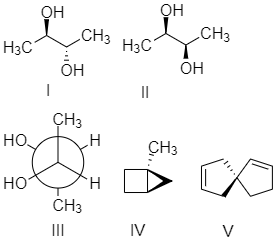Chemistry Exam > Chemistry Tests > Organic Chemistry > Test: Chirality - Chemistry MCQ
Test: Chirality - Chemistry MCQ
Test Description
10 Questions MCQ Test Organic Chemistry - Test: Chirality
Test: Chirality for Chemistry 2025 is part of Organic Chemistry preparation. The Test: Chirality questions and answers have been
prepared according to the Chemistry exam syllabus.The Test: Chirality MCQs are made for Chemistry 2025 Exam. Find important
definitions, questions, notes, meanings, examples, exercises, MCQs and online tests for Test: Chirality below.
Solutions of Test: Chirality questions in English are available as part of our Organic Chemistry for Chemistry & Test: Chirality solutions in
Hindi for Organic Chemistry course. Download more important topics, notes, lectures and mock
test series for Chemistry Exam by signing up for free. Attempt Test: Chirality | 10 questions in 20 minutes | Mock test for Chemistry preparation | Free important questions MCQ to study Organic Chemistry for Chemistry Exam | Download free PDF with solutions
Detailed Solution for Test: Chirality - Question 1
Detailed Solution for Test: Chirality - Question 2
Detailed Solution for Test: Chirality - Question 3
Detailed Solution for Test: Chirality - Question 4
Detailed Solution for Test: Chirality - Question 5
Detailed Solution for Test: Chirality - Question 6
Detailed Solution for Test: Chirality - Question 7
Detailed Solution for Test: Chirality - Question 8
Detailed Solution for Test: Chirality - Question 9
Detailed Solution for Test: Chirality - Question 10
|
44 videos|102 docs|52 tests
|
Information about Test: Chirality Page
In this test you can find the Exam questions for Test: Chirality solved & explained in the simplest way possible.
Besides giving Questions and answers for Test: Chirality , EduRev gives you an ample number of Online tests for practice




























